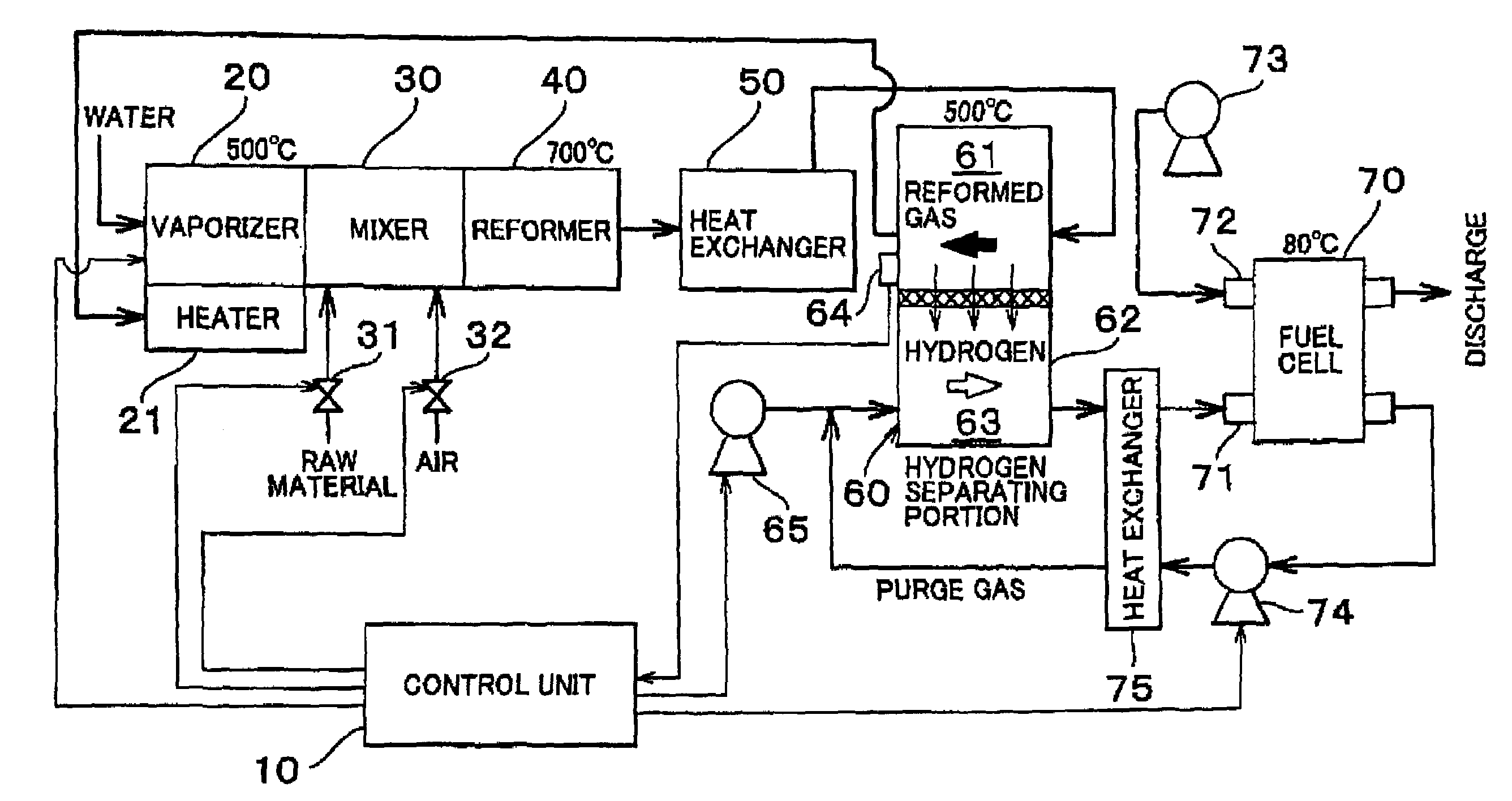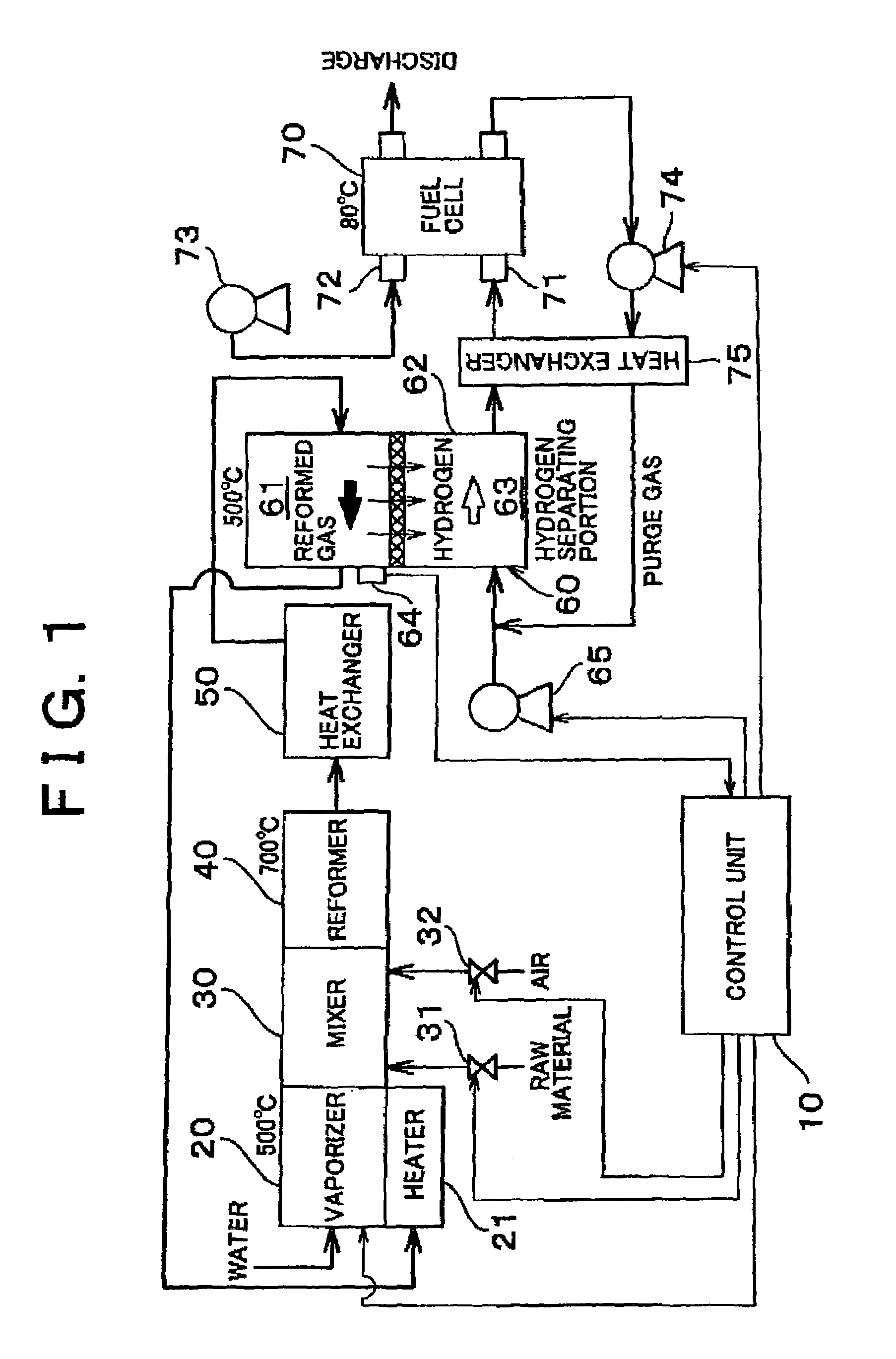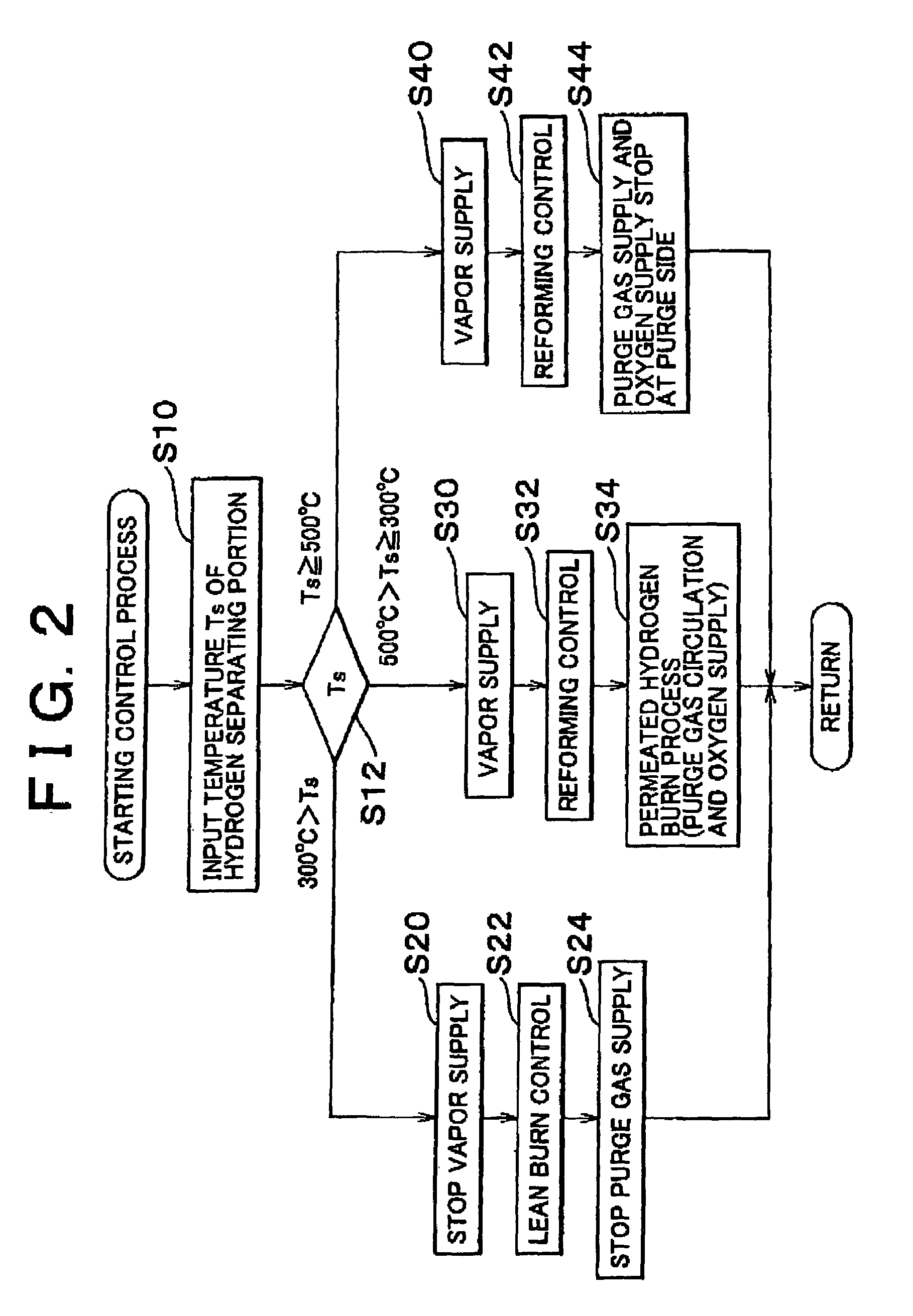Hydrogen generating device having hydrogen separator membrane and control method therefor
a technology of hydrogen separator and generating device, which is applied in electrochemical generators, sustainable manufacturing/processing, transportation and packaging, etc., can solve the problems of heat generated during the reaction and can be diluted, and achieve the effect of avoiding suppressing hydrogen embrittlement of the hydrogen separator membrane in a low temperature condition, and facilitating warm-up of the hydrogen generating devi
- Summary
- Abstract
- Description
- Claims
- Application Information
AI Technical Summary
Benefits of technology
Problems solved by technology
Method used
Image
Examples
first embodiment
A. First Embodiment
A1. System Structure
[0027]FIG. 1 is an explanatory view of a general structure of a fuel cell system according to a first embodiment The fuel cell system generates electric power by electrochemical reaction between hydrogen and oxygen supplied to a fuel cell 70. Compressed air supplied to a cathode 72 by blower 73 is used as oxygen to be supplied. Hydrogen is generated by reforming a raw material by a hydrogen generating device which will be explained below, and is supplied to an anode 71. The raw material to be used can be selected from various carbon hydrogen fuels, which can generate hydrogen by reforming reaction, for example, liquid carbon hydrogen such as gasoline, alcohol such as methanol, aldehyde, or natural gas.
[0028]The raw material and water (not shown) are respectively stored in a tank which serves as a supply portion. The water is first vaporized and heated to about 500° C. in a vaporizer 20, and then supplied to a mixer 30. The raw material and air ...
second embodiment
B. Second Embodiment
B1. System Structure
[0061]FIG. 5 shows an explanatory view of a general structure of a fuel cell system according to a second embodiment. The structure is almost the same as that in the first embodiment, except that the air can be supplied between the reformer 40 and the hydrogen separating portion 60. The amount of air supply is controlled by the control unit 10A by adjusting the opening degree of a valve 41. This embodiment illustrates a case in which the air is supplied between the reformer 40 and the heat exchanger 50. However, the structure may be such that the air may be supplied between the heat exchanger 50 and the hydrogen separating portion 60.
B2. Starting Control Process
[0062]FIG. 6 shows a flow chart for a starting control process according to the second embodiment. As is the case with the first embodiment, the threshold temperatures are set to 300° C. and 500° C., and the control is executed in three phases. In the second embodiment, the process in t...
PUM
| Property | Measurement | Unit |
|---|---|---|
| temperature | aaaaa | aaaaa |
| threshold temperatures | aaaaa | aaaaa |
| threshold temperatures | aaaaa | aaaaa |
Abstract
Description
Claims
Application Information
 Login to View More
Login to View More - R&D
- Intellectual Property
- Life Sciences
- Materials
- Tech Scout
- Unparalleled Data Quality
- Higher Quality Content
- 60% Fewer Hallucinations
Browse by: Latest US Patents, China's latest patents, Technical Efficacy Thesaurus, Application Domain, Technology Topic, Popular Technical Reports.
© 2025 PatSnap. All rights reserved.Legal|Privacy policy|Modern Slavery Act Transparency Statement|Sitemap|About US| Contact US: help@patsnap.com



